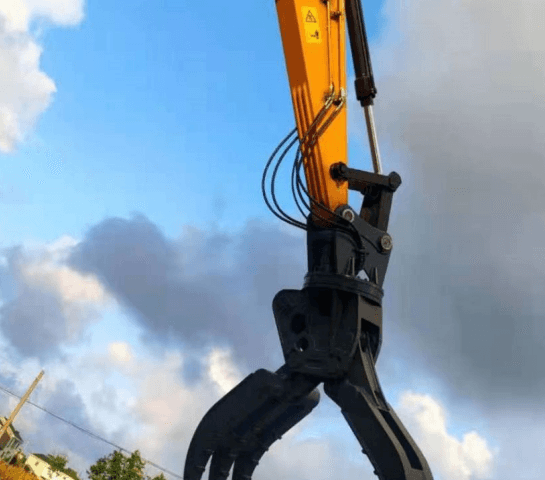
What are the vulnerable parts of the PESCO excavator hydraulic crusher?
2022-12-20
How to maintain PESCO excavator hydraulic Pulverizer?
2022-12-20In construction sites, hydraulic pulverizers are often used, which can quickly pulverize reinforced concrete without causing large noise and dust. It is very convenient to use, and it is also very suitable for some small places. So, how does the PESCO hydraulic pulverizer work?
If you want to understand the operation of the crushing pliers, you need to know their structure. The crushing pliers are composed of a pliers body, a pin shaft, a connecting body, a handle, an oil cylinder, and a pump station. The structure of the PESCO hydraulic pulverizer is reasonable, compact, and highly reliable. The pumping station of the PESCO hydraulic crusher is equipped with a safety overflow valve so that the pressure of the entire system does not exceed its set-rated pressure. Safeguard the entire system.

When using the PESCO hydraulic crushing pliers, when the pump station supplies high-pressure oil to the rodless cavity of the cylinder, the piston rod will stretch out, pushing the jaws to shrink, and breaking the reinforced concrete structure. When the pump station supplies oil to the rod cavity. The piston rod is retracted and the jaws are released. The oil cylinder completes a forward and reverses oil supply, and the PESCO hydraulic crusher completes a cycle operation. The forward and reverse oil supply is continuous, and the hydraulic crushing tongs work repeatedly.
In this way, the concrete structure is continuously broken. The high-pressure radial plunger pump is directly driven by the motor to rotate the pump shaft. Under the action of the swash plate, the plunger reciprocates along the longitudinal direction, and the hydraulic oil is sucked in through the oil inlet valve. It is discharged from the oil drain valve into the system oil circuit. The rated pressure of the safety valve of the crushing pliers is 60MPa, and the operating pressure has been set before leaving the factory. Users should not adjust the pressure at will, and even if the pressure is adjusted, it must not exceed 60MPa.

The manual reversing valve is placed in the middle position before the motor starts, the motor drives the oil pump to run, and the hydraulic oil returns directly to the oil tank. After the handle is turned to one position, the hydraulic oil enters the system and pushes the piston. The piston rod is stretched out, which drives the crushing pliers to shrink, thereby crushing the reinforced concrete structure, and the piston rod of the handle is reversed to return, and the jaws are released to complete a working cycle.
Hydraulic crushing pliers are widely used in static demolition and non-destructive crushing of reinforced concrete. Different connecting plates can be selected according to the thickness of the crushed objects to meet various construction requirements. The crushing pliers are from PESCO Device Hydraulic. The PESCO hydraulic crushing pliers have static crushing, no vibration, and ensure structural safety; no dust, no noise, small broken pieces, and easy to clean and transport; Partial demolition can retain the steel bars to meet the design requirements; fast and efficient crushing is low in cost, and is suitable for widely used in static crushing, floors, concrete beams, concrete walls, concrete column cornices, static demolition works such as stair demolition/concrete hydraulic crushing tongs and walls.




